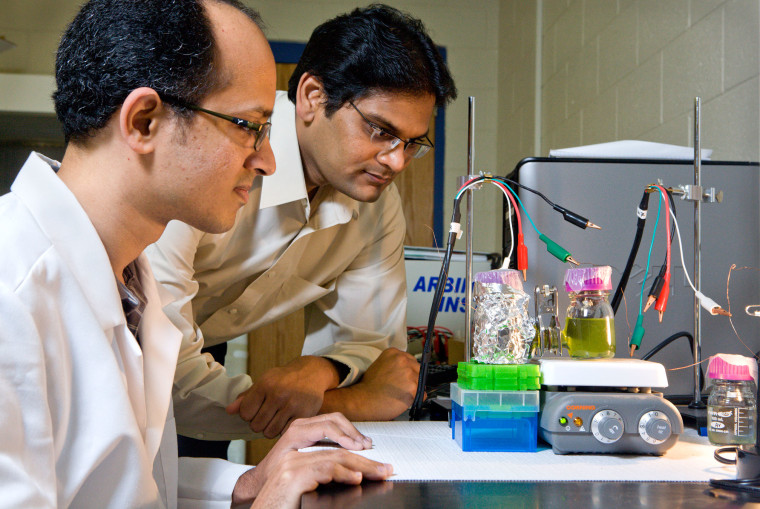A decade from now, a recorder powered by plant parts and stashed in the woods may answer the age-old question: If a tree falls in the forest and no one is around to hear it, does it make a sound?
That's one potential application for an energy conversion technology inspired by photosynthesis, the process plants use to convert sunlight into food.
Plants convert nearly 100 percent of the photons they capture from sunlight into electrons, which go through a series of reactions on the pathway to generating sugars, the team behind the technology explained.
"What we are trying to do is interrupt the pathway of natural photosynthesis and then trying to deal with those electrons," Ramaraja Ramasamy, an electrochemist at the University of Georgia, told NBC News.
He and his colleagues do this by extracting the plant machinery that drives the photosynthetic reaction called thylakoids and immobilizing them on a bed of carbon nanotubes, which act as an electrical conductor, capturing the electrons and sending them along a wire.
"That way, you have a continuous flow of electrons when the light is falling on the photosynthetic machinery from the plant," Ramasamy said, adding that the energy conversion technology is similar to a fuel cell, only in this case the fuel is sunlight.
The efficiency of the system has the potential to be much greater than solar panels, which convert between 12 and 17 percent of the sunlight that hits them into electricity. First, though, more work needs to be done to improve the stability of the system.
Currently, taking the thylakoids out of a plant is akin to taking the heart out of a human — it is not stable for very long, Ramasamy noted. But plants have a mechanism to replenish their photosynthetic machinery. It may be possible, he said, to genetically engineer this machinery for long-term stability.
"That's the direction this has to be explored in much more detail," he said.
If successful, potential applications for the technology, at least in the near to medium term, include use as a power source for sensors used in remote locations, eliminating the need for batteries.
Ramasamy and colleagues recently described a proof-of-concept device in the journal Energy and Environmental Science.
"It is green energy, 100 percent clean, it has the potential to operate at really high efficiency, if we can continue to improve on this," Ramasamy said. "Besides, I think it is a really cool concept."
John Roach is a contributing writer for NBC News. To learn more about him, visit his website.
